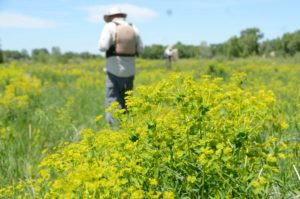Ecological Health & Function
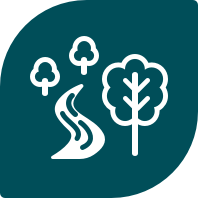
CATEGORY: Riparian Condition
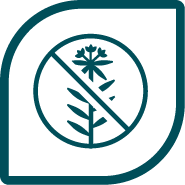
Invasive Plant Species Indicator
The invasive plant species indicator provides a measure of the presence and relative proportion of several invasive plant species that are common in the Yampa Valley, including leafy spurge, Russian olive, and tamarisk.
Invasive Plant Species score by Riverscape

Learn More about invasive plant species on the Yampa River
Russian Olive vs. Buffaloberry
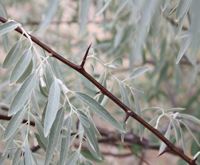
Russian Olive
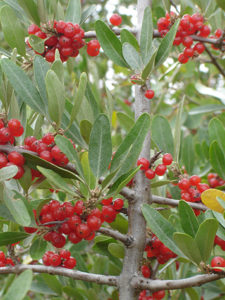
Buffaloberry
Russian olive (Elaeagnus angustifolia) was introduced to the United States to control erosion, but has become invasive in riparian habitats along the Yampa River. Areas dominated by Russian olive have lower biodiversity than areas dominated by native vegetation. Native buffaloberry (Shepherdia argentea) is a riverine floodplain shrub from the same family as Russian olive (Elaeagnaceae) and is commonly found in riparian communities of Northwest Colorado. Native buffaloberry is easily confused with invasive Russian olive and has been mistakenly removed by river managers. It is important to distinguish between the invasive Russian olive and the native buffaloberry because, among other uses, buffaloberries are important forage for deer, elk, and sharp-tailed grouse.
Use this one-page handout to understand their key differences.
Tamarisk
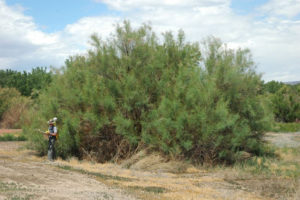
Tamarisk
Tamarisk, also called salt cedar, is an invasive plant introduced with the blessing of the Federal government to reduce erosion in the late 1800s. It has since been classified as an invasive species due to its tendency to outcompete native riparian plants, decrease native biodiversity, and stabilize formerly dynamic stream channels. Not only is it an extraordinary consumer of water, but it also creates salty deposits that inhibit other plant species from growing, and it turns cobbled river beds where native fish spawn into impenetrable sandbars neither fish nor boaters can use.
Leafy Spurge
c Leafy Spurge